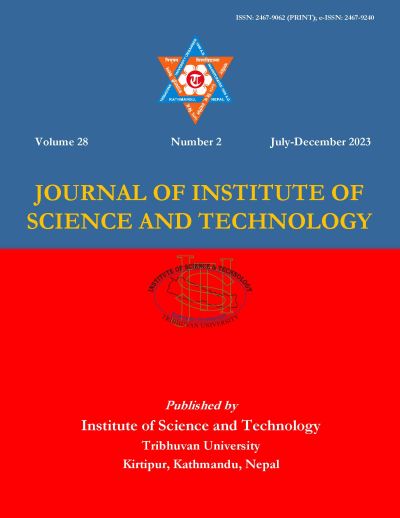Antibiotic Resistance Profile of Biofilm Producing Staphylococci Isolated from Different Clinical Samples
DOI:
https://doi.org/10.3126/jist.v28i2.52739Keywords:
Antibiotic resistance, biofilm, ica gene, staphylococciAbstract
Biofilm mediated infections by Staphylococci have a significant negative impact on patient health and necessitate reliable method for detecting biofilm producers. The ability of isolates to produce biofilm makes them resistant to host immune response as well as available antibiotics. This study aims to detect biofilm producing ability among clinical staphylococci by phenotypic methods and presence of icaAD genes and determine their antibiotic profile. A total of 350 different clinical specimens received in the KIST Medical hospital, Gwarko, Nepal was examined from July 2018 to January 2019 and Staphylococci were identified following standard microbiological procedure. The antibiotic resistivity pattern was detected by Kirby Bauer disc diffusion method whereas biofilm formation was detected by three phenotypic methods viz. congo red agar (CRA), tube method (TM) and tissue culture plate (TCP) method. Furthermore, icaAD genes were detected by PCR method. Chi-square test and independent sample t-test were employed to calculate the significance. A total of 161 Staphylococci were isolated comprising S. aureus (63, 39.1%) and coagulase negative staphylococci (CNS) (98, 60.9%). Most isolates were found to be resistant to penicillin and erythromycin. Strong biofilm formation was detected among 6 (3.7%), 22 (13.7%) and 35 (21.7%) by CRA, TM and TCP method respectively. Similarly, icaAD genes were detected among 24 (14.9%) isolates. Staphylococci isolated from clinical sample showed biofilm forming ability by both phenotypic and genotypic method. The biofilm producing isolates were found to be more resistant to antibiotics than their planktonic counterparts with 56 (89%) and 65 (66%) S. aureus and CNS observed as methicillin resistant respectively. Regular surveillance of biofilm formation by Staphylococci and their antimicrobial resistance profile may lead to early treatment of Staphylococcal infection.
Downloads
Downloads
Published
How to Cite
Issue
Section
License
Copyright (c) 2023 Institute of Science and Technology, T.U.

This work is licensed under a Creative Commons Attribution-ShareAlike 4.0 International License.
The views and interpretations in this journal are those of the author(s). They are not attributable to the Institute of Science and Technology, T.U. and do not imply the expression of any opinion concerning the legal status of any country, territory, city, area of its authorities, or concerning the delimitation of its frontiers of boundaries.
The copyright of the articles is held by the Institute of Science and Technology, T.U.




